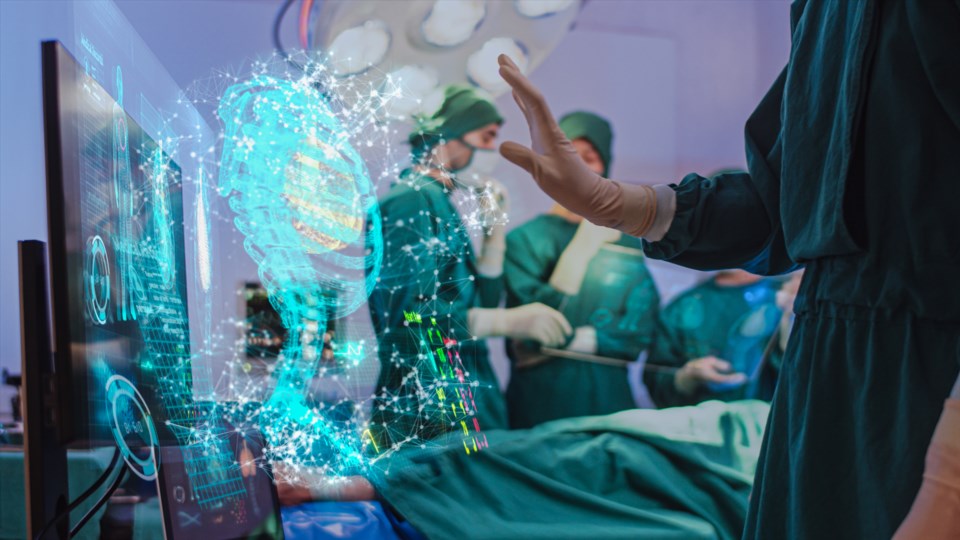Over the past five years, there has been an increase in research and development related to the use of artificial intelligence (AI) in health sciences education in fields such as medicine, nursing and occupational therapy. AI-enhanced technologies have been shown to have educational value and offer flexibility for students. For example, learning scenarios can be repeated and completed remotely, and educational experiences can be standardized.
However, AI’s applications in health sciences education need to be explored further.
To better understand advances in research and applications of AI as a part of the education of health sciences students, we conducted a comprehensive literature review. We also hosted a virtual panel consisting of scholars across Canadian institutions and educational technology companies who are actively involved in AI and health sciences education.
Our panel investigated three themes: current applications of educational theories, performance assessment, and current advances; the role of educational associations and industry; and legal and ethical considerations.
Interdisciplinary collaboration
One of our key findings was that it is important to develop interdisciplinary partnerships and collaborative environments. The effective development and implementation of AI-enhanced educational technologies require different capabilities. These include: possessing the technical know-how required to build and develop AI, understanding the needs of students and educators, applying educational theories to content development and assessment, and considering any legal and ethical issues.
Based on our work, majority of the published studies do not have interdisciplinary teams, hence the call for interdisciplinary collaborations. However, one example that was successful in bringing together individuals from different disciplines is an intelligent tutoring system designed to help medical students with their diagnostic reasoning skills through virtual patient cases.
Therefore, an interdisciplinary team would be able to produce and deliver AI-enhanced education effectively. To achieve this, partnerships should include industry, educational societies, hospitals and universities. Collaborative teams would include researchers and practitioners from health sciences, law, ethics, education, computer science, engineering and other fields.
Enhancing education with educational societies
Educational societies not only play an important role in supporting research and development, but also the use of AI-enhanced educational technologies across health sciences programs.
Future health scientists will require new skills in technology and AI, and the ability to apply them during training and clinical duties. These include understanding issues related to privacy, discrimination, ethical and legal concerns and inherent biases that may create health inequities.
For example, the Royal College of Physicians and Surgeons of Canada, which oversees the training of medical specialists in Canada, has a role in creating new initiatives and support systems to address these emerging needs. The college could add an additional component to the medical curriculum that focuses on core information necessary to use these AI-enhanced technologies. Practising physicians will also need the support of the college to develop technology-supported clinical skills.
Ultimately, if we want to enhance research and applications of AI in health sciences education, collaboration across different fields is key. This is so that both effective and equitable AI technologies can be developed, and that in the future, health scientists can use these technologies while understand their risks and benefits.
![]()
Jason M. Harley receives funding from The Social Sciences and Humanities Research Council of Canada.
Elif Bilgic does not work for, consult, own shares in or receive funding from any company or organisation that would benefit from this article, and has disclosed no relevant affiliations beyond their academic appointment.



